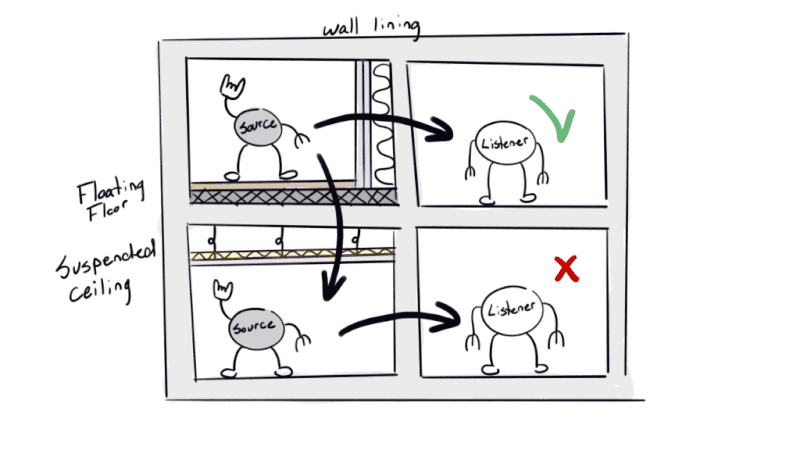Designing for acoustic performance
Let’s dive into a topic that affects not just fitness enthusiasts but also those working or residing near gyms—noise complications.
While we all appreciate the energetic ambiance of a gym, the audible side effects can sometimes create challenges, especially in spaces shared with offices or living quarters.
Not all gym activities generate the same level of noise. From quiet walks on stair treadmills to the earth-shaking impact of deadlifts, the spectrum is vast. Sprinting on treadmills, weightlifting, and certain CrossFit routines with medicine balls can of course also be a cause for noise issues.
It all starts early in the process: Implementing thoughtful design elements early on, can significantly mitigate noise-related challenges.
Consider the following:
Floating Floors: Absorbs impact and prevent vibrations from spreading through the slab.
Vibration Isolation Pads: Place beneath heavy equipment at deadlift stations to minimize impact.
Rubber Flooring: Easy to clean and of course also provides a little extra cushion for dropped weights.
Wall Lining and suspended ceilings: Box-in-a-box design, tends to work well expecially for high intensity group-workouts with blasting loud music.
Suspended Ceilings also provide further airborne and impact noise isolation.

Common structures
Sound insulation is a critical component, ensuring that the interior environment remains up to date with building regulations regarding its acoustic performance.
So, what can be done to optimize acoustic comfort?
Gypsum Wall Linings: They are versatile, cost-effective, and can often significantly reduce sound transmission through walls (and ceilings). Their high-density composition works wonder for improving sound insulation.
Floating Floors: Floating floors are another excellent strategy for combating both direct and flanking transmission.
Suspended Ceilings: Suspended ceilings aid in acoustic performance. By isolating the ceiling from the structure above, they can minimize the transmission of sound.
There are plenty of ways to improve the acoustic performance, either during the planning phase or for renovations.
